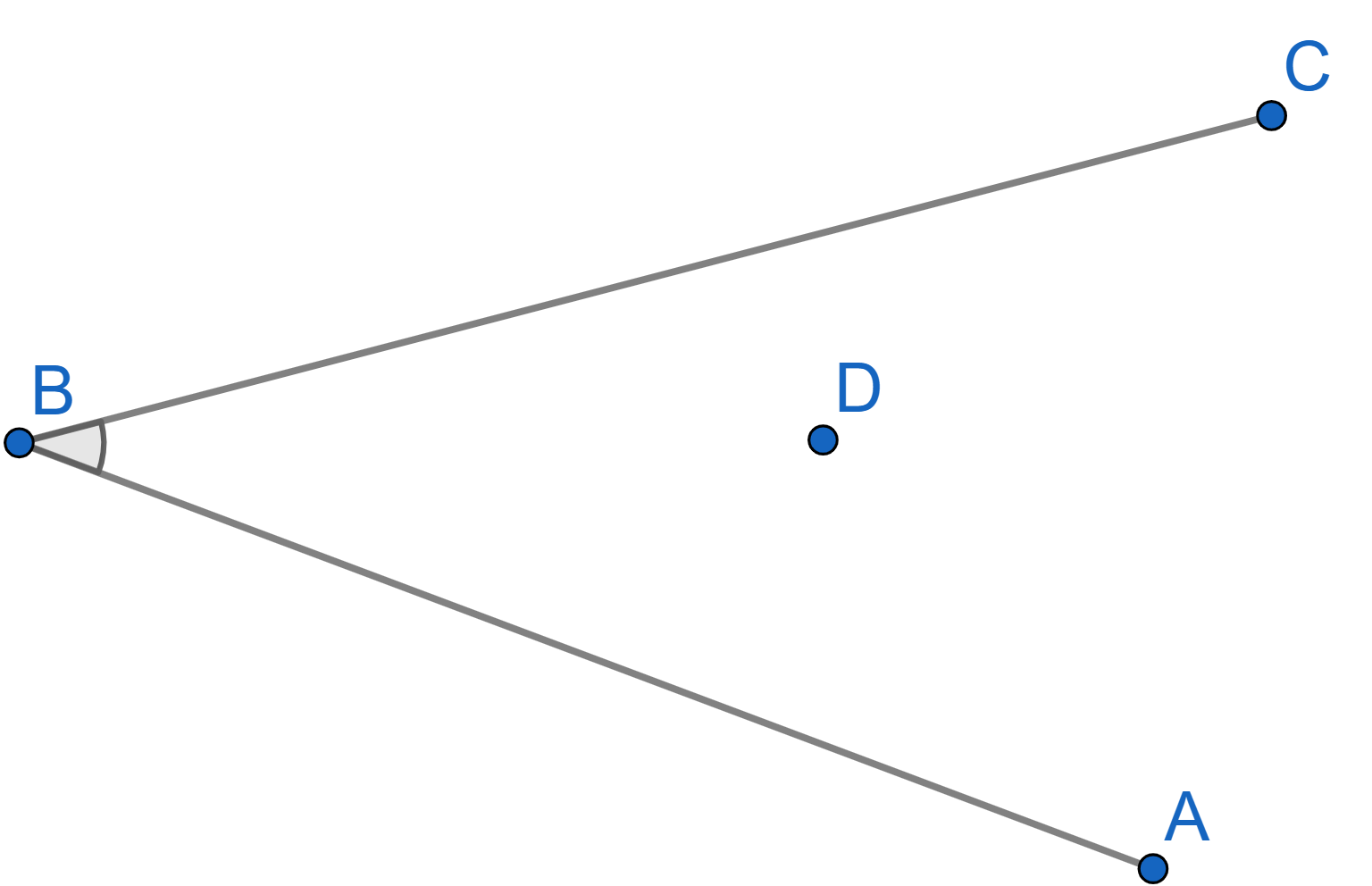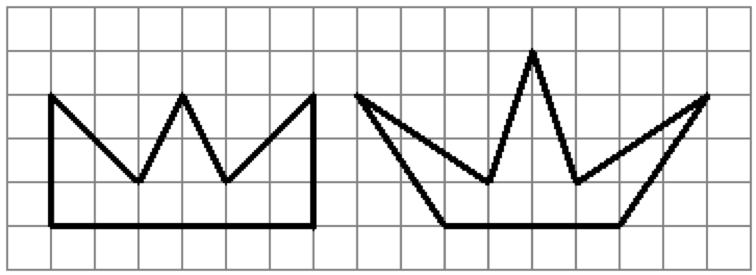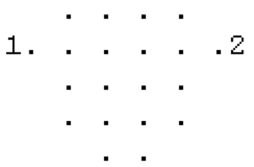Problems
The distance between London and Warsaw equals \(1450\) km, between Warsaw and Kyiv is \(680\) km. The distance from London to New Delhi, is \(6700\) km and the distance from Kyiv to New Delhi is \(4570\) km. What is the distance from London to Kyiv?
Show that if all sides of a triangle have integer lengths and one of them is equal to \(1\), then the other two have lengths equal to each other.
A billiard ball lies on a table in the shape of an acute angle. How
should you hit the ball so that it returns to its starting location
after hitting each of the two banks once? Is it always possible to do
so?
(When the ball hits the bank, it bounces. The way it bounces is
determined by the shortest path rule – if it begins at some point \(D\) and ends at some point \(D'\) after bouncing, the path it takes
is the shortest possible path that includes the bounce.)

Which rectangles with whole sides are there more of: with perimeter of 1996 or with perimeter of 1998? (The rectangles \(a \times b\) and \(b \times a\) are assumed to be the same).
Find the area of the figures shown below.

In a board, 20 pins are placed (see the picture). The distance between any adjacent pins is 1 inch. Pull a string of length 19 inches from the first pin to the second one, so that it goes through all the pins.

On the sides \(AB\), \(BC\) and \(AC\) of the triangle \(ABC\) points \(P\), \(M\) and \(K\) are chosen so that the segments \(AM\), \(BK\) and \(CP\) intersect at one point and \[\vec{AM} + \vec{BK}+\vec{CP} = 0\] Prove that \(P\), \(M\) and \(K\) are the midpoints of the sides of the triangle \(ABC\).
We are given a convex 200-sided polygon in which no three diagonals intersect at the same point. Each of the diagonals is coloured in one of 999 colours. Prove that there is some triangle inside the polygon whose sides lie some of the diagonals, so that all 3 sides are the same colour. The vertices of the triangle do not necessarily have to be the vertices of the polygon.
The circles \(\sigma_1\) and \(\sigma_2\) intersect at points \(A\) and \(B\). At the point \(A\) to \(\sigma_1\) and \(\sigma_2\), respectively, the tangents \(l_1\) and \(l_2\) are drawn. The points \(T_1\) and \(T_2\) are chosen respectively on the circles \(\sigma_1\) and \(\sigma_2\) so that the angular measures of the arcs \(T_1A\) and \(AT_2\) are equal (the arc value of the circle is considered in the clockwise direction). The tangent \(t_1\) at the point \(T_1\) to the circle \(\sigma_1\) intersects \(l_2\) at the point \(M_1\). Similarly, the tangent \(t_2\) at the point \(T_2\) to the circle \(\sigma_2\) intersects \(l_1\) at the point \(M_2\). Prove that the midpoints of the segments \(M_1M_2\) are on the same line, independent of the positions of the points \(T_1, T_2\).
Natural numbers from 1 to 200 are divided into 50 sets. Prove that in one of the sets there are three numbers that are the lengths of the sides of a triangle.